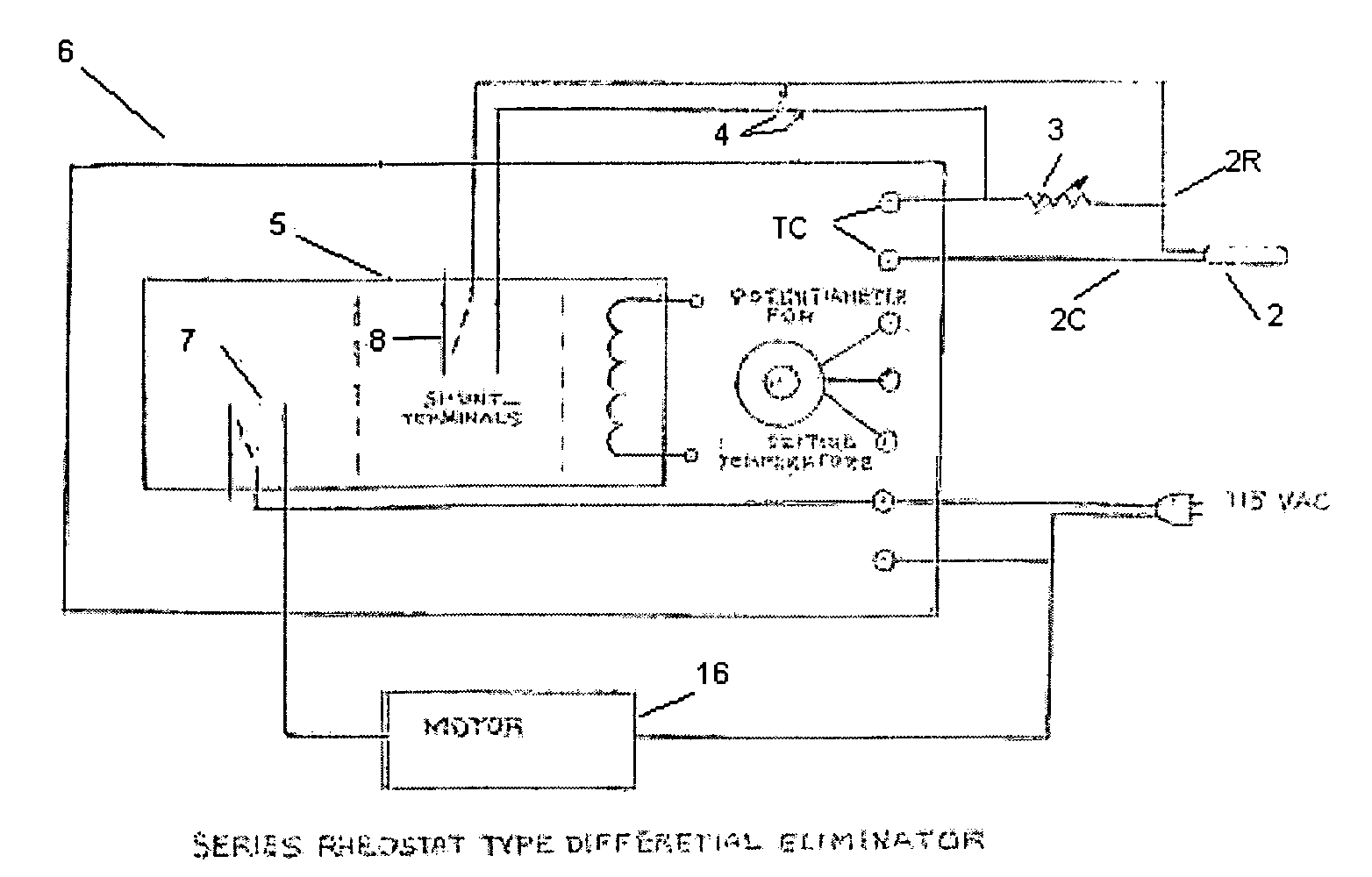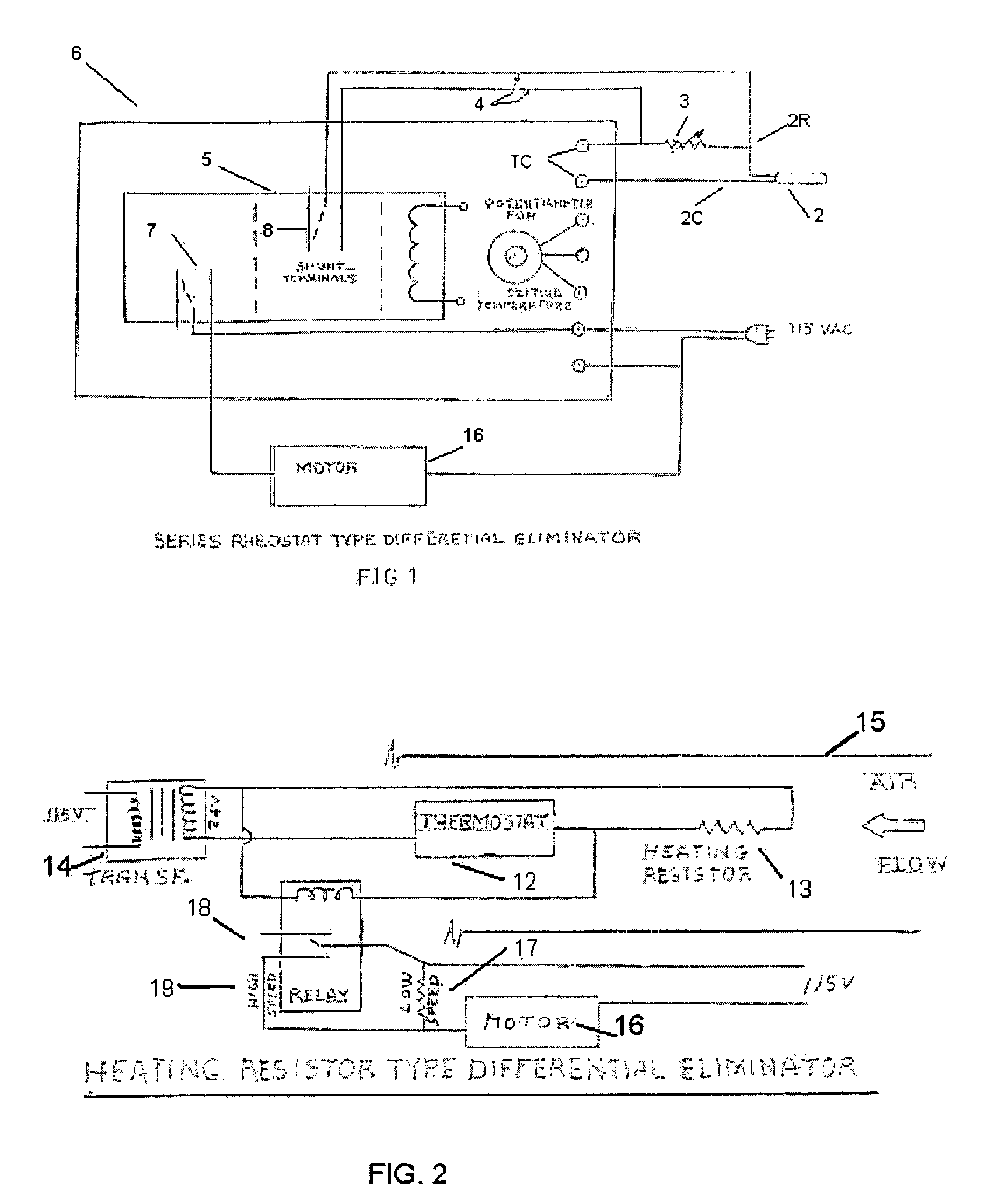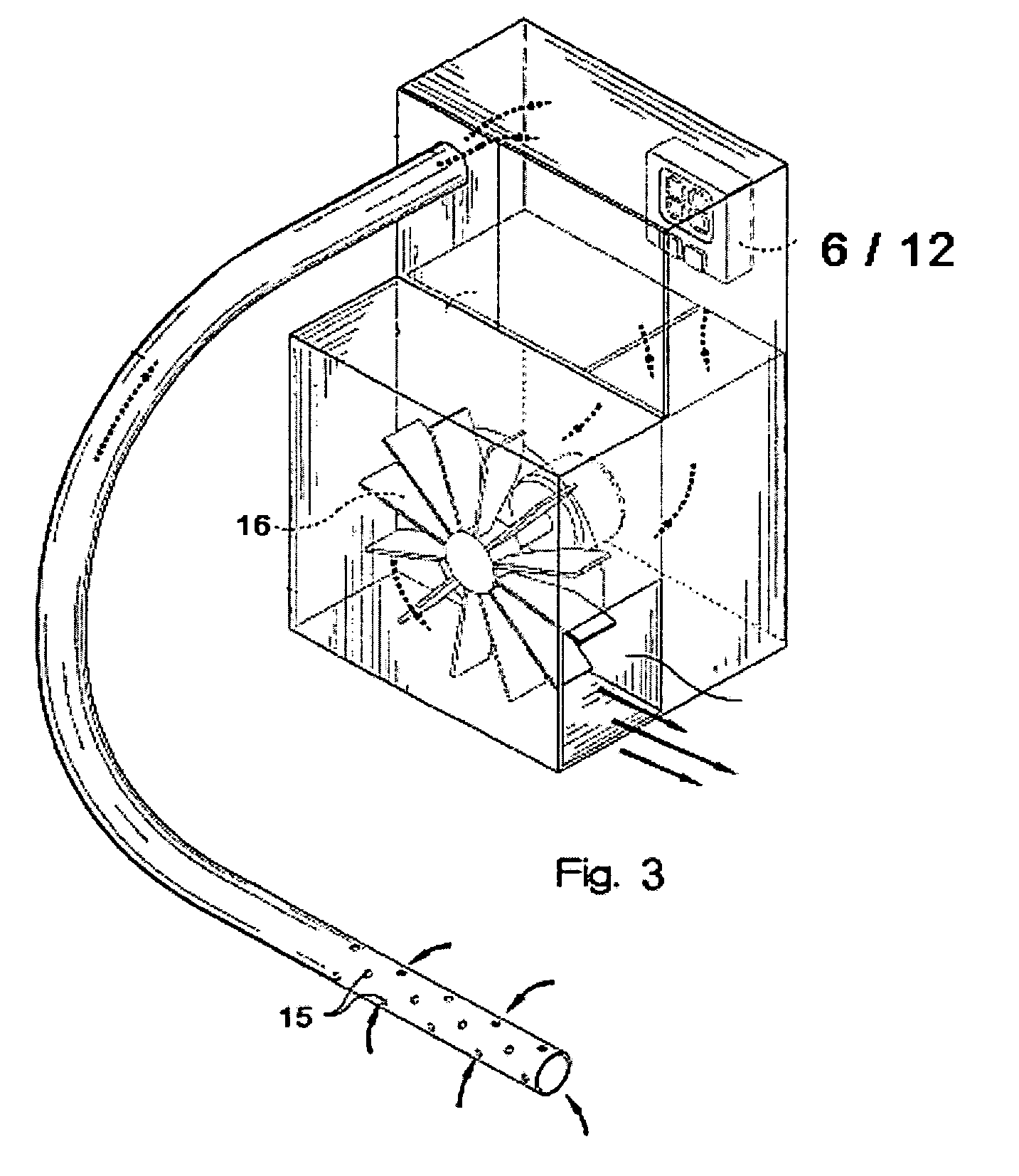Temperature differential eliminator
a technology of temperature differential and eliminator, which is applied in the direction of lighting and heating apparatus, heating types, instruments, etc., can solve the problems of system components being damaged, systems unsuitable for applications requiring precise temperature control, and preventing the use of controllers in applications, etc., to achieve more precise temperature control, reduce or eliminate the temperature differential, and increase the effect of cos
- Summary
- Abstract
- Description
- Claims
- Application Information
AI Technical Summary
Benefits of technology
Problems solved by technology
Method used
Image
Examples
Embodiment Construction
[0016]Embodiments of the present invention improve the accuracy of simple, inexpensive temperature controllers by adjusting their temperature differential. Particularly, embodiments of the present invention reduced the temperature differential of on-off temperature controllers and thermostats to a precise range. Electronic components are switched into and out of the temperature control feedback loop through a process that reduces the temperature differential while allowing the system to operate within a temperature control range that prevents chatter.
Series Rheostat Type Differential Eliminator
[0017]The “Series Rheostat Differential Eliminator (SRDE)” circuit improves the accuracy of inexpensive temperature controllers by making the temperature differential or “hysteresis” of these circuits adjustable. Automatic on-off temperature controllers seek to reach an ideal temperature within a control volume. The ideal temperature is referred to as the set-point temperature. The on-off temp...
PUM
 Login to View More
Login to View More Abstract
Description
Claims
Application Information
 Login to View More
Login to View More - R&D
- Intellectual Property
- Life Sciences
- Materials
- Tech Scout
- Unparalleled Data Quality
- Higher Quality Content
- 60% Fewer Hallucinations
Browse by: Latest US Patents, China's latest patents, Technical Efficacy Thesaurus, Application Domain, Technology Topic, Popular Technical Reports.
© 2025 PatSnap. All rights reserved.Legal|Privacy policy|Modern Slavery Act Transparency Statement|Sitemap|About US| Contact US: help@patsnap.com



